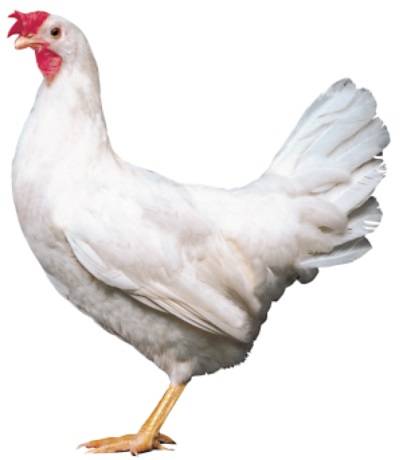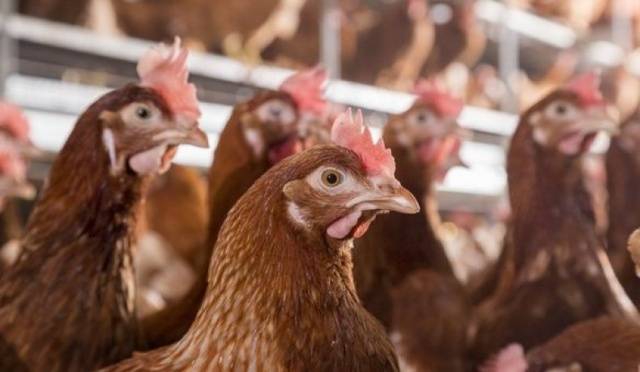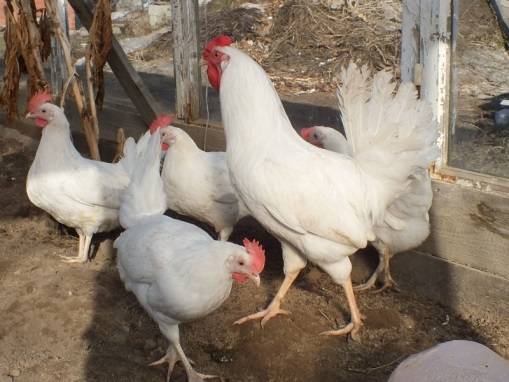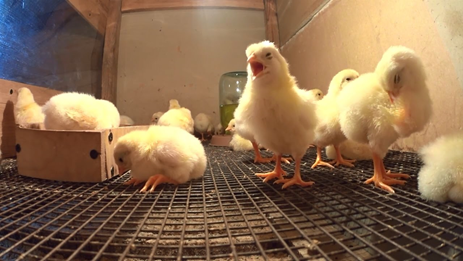Content
For the role of the creators of the already legendary egg Dekalb cross-breed chickens today are claimed by two countries and two firms at once: the USA and the Dekalb Poltri Research firm and the Netherlands and the Easy firm. When comparing the name of the cross and the names of the companies, the version that the Decalb breed of chickens was created in the United States seems more likely. Ambition is no stranger to breeders and company owners, so it is a logical and reasonable move to name a new cross after your company.
The Dekalb White chicken breed was bred back in the 19th century and still has not lost its relevance. By the way, the word White - "white" in the name of the cross once again confirms the origin of the breed from an English-speaking country.
Even at the beginning of the presentation of the breed to the general public, as a marketing ploy, the Dekalb breed was declared "queen of chickens". Although this was just a publicity stunt, the Dekalb White chickens fully lived up to the name. Their productive characteristics turned out to be better than that of any other breed that existed in those years.
Time passed, breeders bred new breeds, but Dekalb Bely chickens did not give up their positions. Today, breeding work is also continuing on them. Poultry farmers strive to improve egg production rates. It is impossible to force a Dekalb laying hen or any other hen to carry more than 1 egg per day, therefore the emphasis is on increasing the duration of egg production. Breeders strive to increase the production period of Decalb hens from 80 actual weeks to 100. That is, to increase the productive period of Decalb hens by 5 months.
There is also a second line of the Decalb breed with the prefix "brown". The productive characteristics of both lines are similar, chickens differ only in plumage color. But farmers today prefer to breed the white version.
Description
Outwardly, the Dekalb white breed of chickens is unremarkable. According to the description, the Dekalb breed of chickens can be easily confused with other egg-laying crosses and breeds that have a similar color range:
- Hisex;
- Leghorn.
However, in order to distinguish these crosses "live" one also needs considerable experience. Newcomers to the poultry industry are not immune to mistakes.
The video shows that only a rooster, which has a very fleshy and low comb, can be distinguished from Leghorn.
In the description of the Dekalb chicken breed, it is indicated that they have a medium-sized body with a light bone. The head is small, with a large leaf-shaped crest, falling to the side. Earrings and comb in deep red color. The lobes and face are pink. The neck is long, covered with a well-developed feather. The eyes are orange-red. The beak is short, yellow. The body is placed almost vertically. The back is straight. The tail is narrow but well developed.
The wings are long, tightly attached to the body. The chest is slightly protruding. The belly is well developed. The legs are long, with underdeveloped muscles. Metatarsus are long, yellow. Four fingers. The foot is also yellow.
In the Dekalb breed, the plumage can be white or brown.
The weight of chickens is 1.5-1.7 kg, roosters are not more than 2 kg. Already by weight, you can determine the direction of the breed. Like any laying hen, Decalb cannot be very heavy.
Productive characteristics
Judging by the description, Dekalb chickens are well consolidated in the number and size of eggs. Their egg-laying period begins at 4 months, the peak falls at the age of 10 months. The eggs adjust in size very quickly. For a year, Decalb chickens, according to reviews, bring up to 350 pieces. eggs weighing up to 71 grams. The shell color differs depending on the line in the breed. White chickens produce an egg with a white shell. Brown ones carry a brown product.
Content
Chickens were created as an industrial egg cross. This means keeping in poultry farms in confined spaces.Therefore, you can often see a photo of Dekalb chickens in cage conditions. But these chickens also feel good on free-range.
When the device of the chicken coop floor area is calculated based on the norm of 5 heads per 1 sq. m. For wintering, the walls of the poultry house are insulated. Roosts are made inside the premises. Depending on the number of planned chickens, perches can be made in several floors.
If there are cold winters in the region, to save on heating the chicken coop before wintering, the chickens are made a deep bed of sawdust. Poultry droppings will generate heat when re-heated in sawdust. But we must remember that together with the heat, decomposing excrement releases ammonia.
To get rid of birds from parasites, outbreaks of infection with which are observed when chickens are crowded indoors, baths with ash and sand are placed in the chicken coop. Ash kills feather eaters, sand makes it easier to remove parasites from the chicken's body. The contents of the trays should be changed as often as possible. For pest control of the chicken coop from bugs and ticks, before the birds are launched into the room, the walls are treated with insecticidal preparations.
To obtain production in winter, chickens are artificially lengthened daylight hours using fluorescent lamps.
Breeding
The description of the Dekalb White chickens clearly indicates that this is an industrial egg breed. This means that there is no need to expect from them a developed hatching instinct. Brownies also do not seek to become brood hens. When breeding these chickens at home, the poultry farmer will in any case have to use an incubator.
First of all, you need to decide whether the Dekalb chickens are a breed or a cross. In the second case, independent breeding of offspring from the herd available on the farm will be impossible.
Sorry, Dekalb cross. Hatching rate of chicks from 75 to 80%. And the survival rate is almost 100 percent. The hatching egg will have to be purchased from the manufacturer. The second option is to buy ready-made chickens from those poultry farmers who are engaged in incubation on an industrial scale.
At first, for chickens of Dekalb White chickens, a brooder is needed as in the photo.
Chicks need high air temperatures and the slatted floor will keep them hygienic. Like any artificial breed, Dekalb is very susceptible to disease in the first months of life.
It is better to start feeding chickens, as representatives of an artificial breed, immediately with ready-made feed for young animals from 0 days.
Feeding
In the future, if you really want to receive eggs from Dekalb chickens as in the photo with the weight and quantity indicated in the description, the layers should also be fed with professional feed. There are types of compound feeds that stimulate egg-laying. It is usually thanks to these feeds that poultry begins to lay at a very young age.
Complaints and reviews that the products of Dekalb White chickens do not match the description and the photos are often associated with a violation of the feeding regime. For industrial crosses and breeds, feeding in the old fashioned way with self-made compound feed, or even whole grain, is categorically unsuitable. Wet mash is good only as a treat to complement the main diet.
But the mash quickly turns sour, causing intestinal diseases in chickens. In addition, with self-made feed it is almost impossible to properly balance all the necessary vitamins and minerals. Many of these elements are added to compound feed separately in factories. They are not contained in the grain.
Testimonials
To be honest, I still do not understand how Dekalb outwardly differs from the same Hisex or Lomancha. Although I have been keeping this breed for four years. When buying eggs or chickens of the Decalb breed, you have to rely on the honesty of the producer. Therefore, I always take only from large specialized farms, which do not make much sense to cheat. But when the hens grow up and start laying, the difference quickly becomes noticeable. Dekalb actually lay eggs of almost the same weight and are able to "work" for almost two years. In this respect, they are significantly more profitable than other egg crosses.
Conclusion
The Dekalb breed significantly surpasses other industrial egg crosses in its productive characteristics. Why she was practically unknown in the Union before is not clear. Unless that can be attributed to the Cold War, trade secrets and the unwillingness of the United States to sell the latest technologies to the USSR. Today, Dekalb chickens have appeared in Russia and are gaining more and more popularity among poultry farmers.



















We need information about the light regime for Dekalb white and feeding in grams per bird per day.